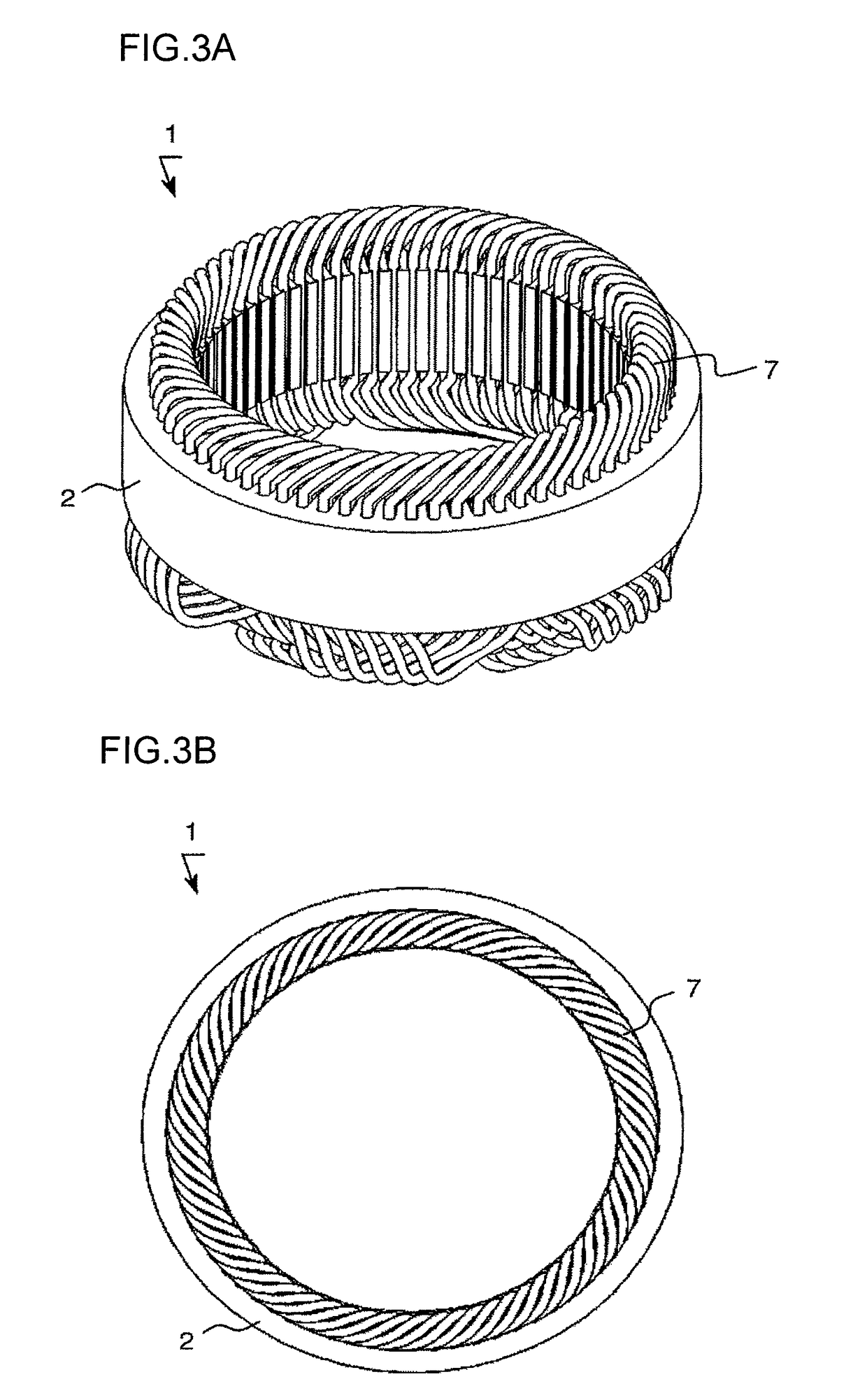Rotating electrical machine
a technology of rotating electrical machines and electrical components, which is applied in the direction of synchronous machines, windings, dynamo-electric components, etc., can solve the problems of difficult to obtain any further increase of efficiency and the worsening of the control responsiveness of the coil current, so as to increase the efficiency of rotating electrical machines and increase efficiency
- Summary
- Abstract
- Description
- Claims
- Application Information
AI Technical Summary
Benefits of technology
Problems solved by technology
Method used
Image
Examples
Embodiment Construction
[0033]The embodiments explained below are related to a rotating electrical machine such as a motor or a generator or the like and to a method of manufacture thereof, and particularly relate to a rotating electrical machine that is equipped with a dispersal winding coil made by a thick wire lap winding method, and to a method of manufacture thereof.
[0034]FIG. 1 shows a stator 1 according to the present invention, upon which coils are wound so that two stator magnetic poles formed by in-phase coils are disposed within 360° of electrical angle as defined by the magnetic poles of the rotor. In the following, a coil that has been made by this type of winding will be termed a “dispersal winding coil”.
[0035]FIG. 1A is an elevation view showing this stator 1 as seen from its side: dispersal winding coils 7 are installed upon a stator core 2, and terminal portions 9 of wires 3 are connected thereto. With this structure, the height of the coil end portion 3d becomes low.
[0036]FIG. 1B is an en...
PUM
 Login to View More
Login to View More Abstract
Description
Claims
Application Information
 Login to View More
Login to View More - R&D
- Intellectual Property
- Life Sciences
- Materials
- Tech Scout
- Unparalleled Data Quality
- Higher Quality Content
- 60% Fewer Hallucinations
Browse by: Latest US Patents, China's latest patents, Technical Efficacy Thesaurus, Application Domain, Technology Topic, Popular Technical Reports.
© 2025 PatSnap. All rights reserved.Legal|Privacy policy|Modern Slavery Act Transparency Statement|Sitemap|About US| Contact US: help@patsnap.com



